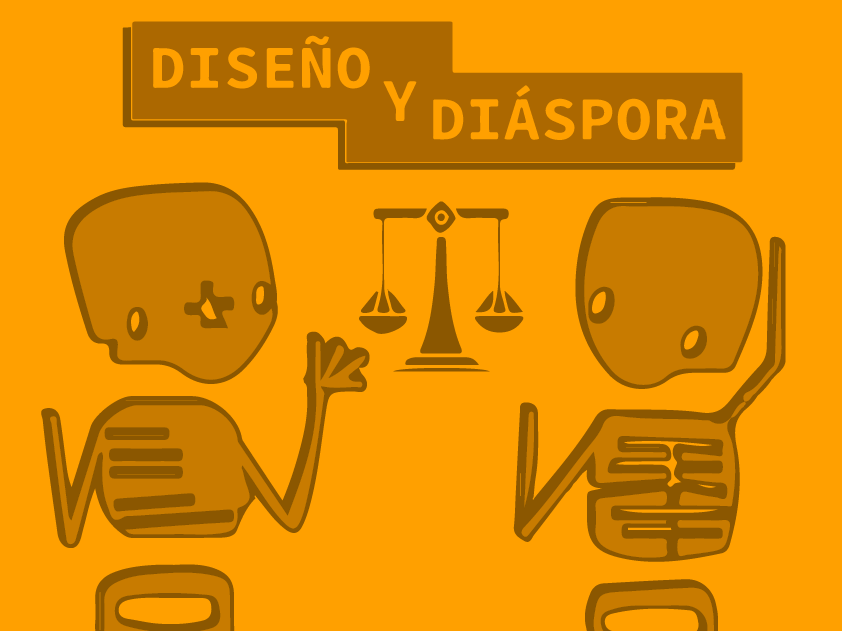Presented in Cumulus Conference 2019 - The Design After by Santiago De Francisco Vela Miguel Navarro-Sanint María Belén Castellanos Ramírez Leidy Lorena Rodríguez Pinto and Catalina Ramírez Díaz
Go here to read the article
Go here to read the article
Arrival of the "chiva" to the local market
This academic paper was made possible thanks to the support of the United States Agency for International Development (USAID): part of the Conservation and Governance in the Amazon Piedmont Program, which is operated by the Fondo Patrimonio Natural in alliance with the Design School of Universidad de los Andes. The content is the responsibility of the Design School of Universidad de los Andes and does not necessarily reflect the opinion of USAID, the government of the United States of America, or the Fondo Patrimonio Natural.
Abstract
In Colombia’s Amazon piedmont, the cattle industry is one of the most important productive activities (IGAC 2016) due to a high demand and to the sturdy infrastructure built upon it that satisfies peasants’ economic stability. However, in piedmont ecosystems, which shelter a great number of species and water springs, this industry has caused massive and irreversible environmental losses for community profit.
As a result, how can communities’ productive practices be adapted to reduce the environmental impact within their territories? Payments for Environmental Services (PES), for which landowners receive money (or other spurs) in exchange for conservation efforts, have been a way to redirect communities’ activities. Nevertheless, PES has not proven to be a long-term solution. We studied the cattle industry system in depth (production, distribution, commercialization) in a community located in San Vicente del Caguán, and found that stakeholders have used non-traditional currencies that determine and influence several of their productive behaviors. We focus on identifying the (economic and non-economic) interests that foster certain behaviors as they might allow us to re discover and revalue the existing bio-currencies that trigger specific efforts, not only to stop (or reduce) deforestation rates, but to start (or increase) active recovery actions in highly affected areas. Bio-currencies could then be defined as alternative economic instruments that do not involve monetary transactions and do not try to compete with them. Their purpose is to trigger less harmful productive practices for the environment.
Keywords
Bio-currencies, conservation strategies, participatory design, rural communities, environmental services.
Bio-currencies, conservation strategies, participatory design, rural communities, environmental services.
Resumen
Bio-monedas: una alternativa a los Pagos por Servicios Ambientales (PSA)
Bio-monedas: una alternativa a los Pagos por Servicios Ambientales (PSA)
En el piedemonte amazónico de Colombia, la industria ganadera es una de las actividades productivas más importantes (IGAC, 2016) debido a la alta demanda y a la robusta infraestructura construida sobre ella que satisface la estabilidad económica de los campesinos. Sin embargo, en los ecosistemas del piedemonte, los cuales albergan un gran número de especies y manantiales de agua, esta industria ha causado pérdidas ambientales monumentales e irreversibles para el beneficio de la comunidad.
En consecuencia, ¿cómo pueden adaptarse las prácticas productivas de las comunidades para reducir el impacto ambiental en sus territorios? Los Pagos por Servicios Ambientales (PSA) mediante los cuales los propietarios reciben dinero (u otros incentivos) a cambio de esfuerzos de conservación, han sido una manera de redireccionar las actividades de las comunidades. Sin embargo, no han demostrado ser una solución a largo plazo. Estudiamos a profundidad el sistema de la industria ganadera (producción, distribución, comercialización) en una comunidad ubicada en San Vicente del Caguán, y encontramos que los actores han utilizado monedas no tradicionales que determinan e influyen en varios de sus comportamientos productivos. Nos enfocamos en identificar los intereses (económicos y no económicos) que fomentan ciertos comportamientos, ya que nos permiten re-descubrir y revalorizar las bio-monedas existentes que activan esfuerzos específicos, no sólo para detener o reducir las tasas de deforestación, sino para iniciar o incrementar las acciones de recuperación activa en áreas altamente afectadas. Las bio-monedas podrían definirse como instrumentos económicos alternativos que no implican transacciones monetarias y que no intentan competir con ellas. Su objetivo es desencadenar prácticas productivas menos nocivas para el medio ambiente.
Approach scheme with the design tools. Source: Adaptation from Beckman and Barry (2007).
The inputs and outputs map filled by a participant from Las Guacamayas. Source: De Francisco (2017).
Recipe system used by the milkman. Source: Castellanos (2018)
The idea of using tangible models aimed to understand the importance of the resources they perceived as beneficial. Source: Ramírez (2017).
Categories, benefits, and examples of the interpretation of the well-being indicators. Source: Adaptation from Bcompendium of OECD well-being indicators (2011).
During the construction of projects workshop. Source: Rodríguez (2018).
Model of distribution of land usage, current situation with the perception of growth, and our aim (concept vision) to move to socio ecological systems.
To cite this article:
Santiago De Francisco Vela, Miguel Navarro-Sanint, María Belén Castellanos Ramírez, Leidy Lorena Rodríguez Pinto, and Catalina Ramírez Díaz. "Bio-currencies: an alternative to Payments for Environmental Services (PES)". Dearq, no. 26 (2020): 60-69. https://doi.org/10.18389/dearq26.2020.07
Santiago De Francisco Vela, Miguel Navarro-Sanint, María Belén Castellanos Ramírez, Leidy Lorena Rodríguez Pinto, and Catalina Ramírez Díaz. "Bio-currencies: an alternative to Payments for Environmental Services (PES)". Dearq, no. 26 (2020): 60-69. https://doi.org/10.18389/dearq26.2020.07









